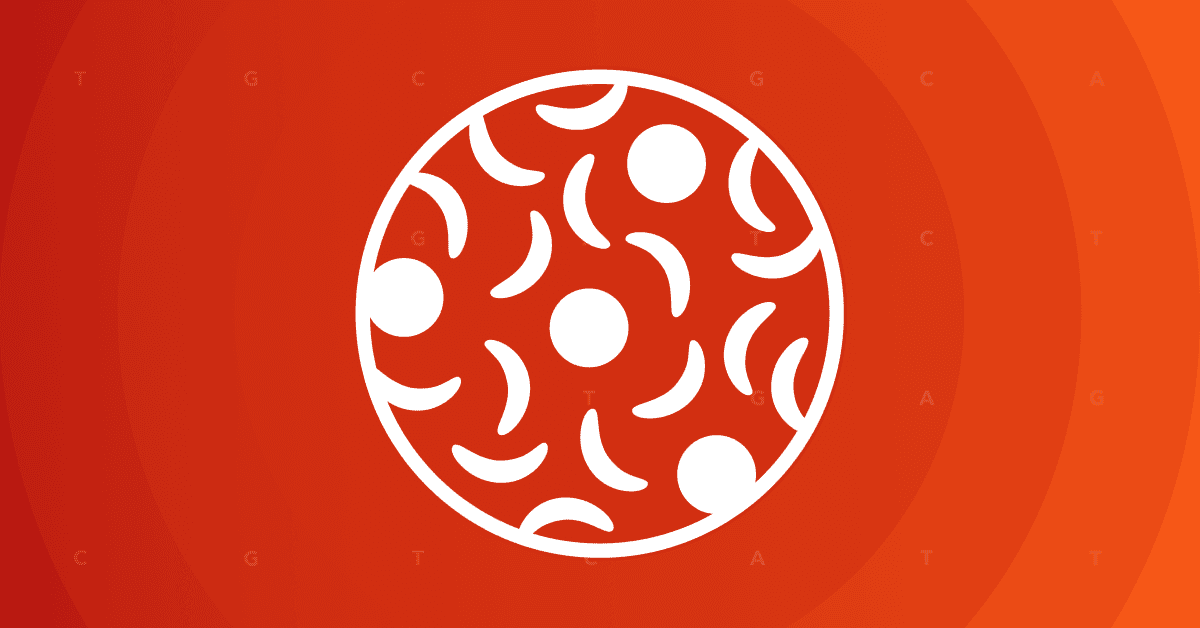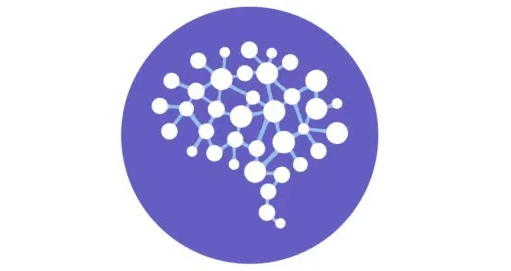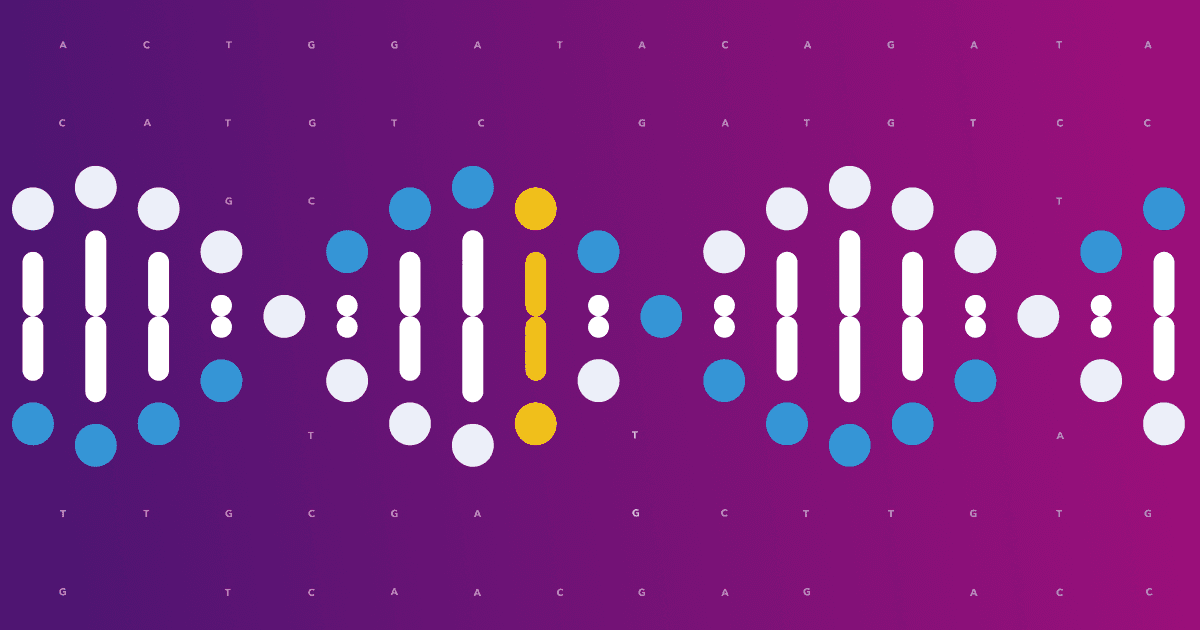In the largest and most diverse genetic study of sickle cell trait, researchers from 23andMe, the National Institutes of Health, and Johns Hopkins University School of Medicine published findings linking the trait to increased risk for certain blood clots.
Blood Clotting Risks
The study, published just as we begin National Sickle Cell Awareness Month, validated the association of sickle cell trait with blood clots. But to put this risk into context, the study, which included data from more than four million people who consented to participate in research, found that people with a genetic variant known as Factor V Leiden are at a higher risk for developing harmful blood clots or venous thrombosis (VTE) compared to those who are carriers of sickle cell trait.
The study also looked at different types of blood clots, like deep vein thrombosis, which forms in a deep vein, like in the legs, and pulmonary emboli, which are caused by blood clots that travel to the lungs. This study validated the association between having sickle cell trait and developing pulmonary emboli. It did not find an association with developing deep vein thrombosis. The research also confirmed the association between Factor V Leiden and pulmonary emboli and deep vein thrombosis.
“This study, therefore, provides important insights about patterns of venous blood clots and suggests a unique mechanism of blood clotting in people with sickle cell trait,” said Rakhi Naik, M.D. M.H.S., clinical director for the Division of Hematology at Johns Hopkins University, Baltimore, who co-led the study. “Knowing the risks of blood clots in people with sickle cell trait is important for situations such as surgeries or hospitalizations, which add to the risk of developing serious blood clots.”
Ancestry-Independent Risks
The findings published in the journal Blood Advances are significant because the number and diversity of research participants allowed scientists to calculate “ancestry-independent” odds ratios for the risk of blood clotting among those with sickle cell trait.
More than 200,000 of the four million research participants were of African ancestry, 590,000 were of Latino ancestry, three million were of European ancestry, 150,000 were of East Asian ancestry, and 41,000 were of South Asian ancestry.
Although the trait is most common among people of African ancestry, with an estimated eight to 10 percent of African Americans having sickle cell trait, it can also affect Latinos, South Asians, and people with ancestry from southern Europe and the Middle East. More than 100 million people worldwide have sickle cell trait.
The Importance of Diversity in Genetic Research
Vence Bonham Jr., J.D., who co-led the study and serves as acting Deputy Director of the National Human Genome Research Institute (NHGRI) at the National Institutes of Health, United States, said The study offers another example of the importance of using a diverse population in genetic research.
Bonham has led sickle cell disease research at the NHGRI and pushed for broader inclusion of underrepresented groups in genomics research. He’s also led the Democratizing Education for Sickle Cell Disease Gene Therapy Project, offering resources for those with sickle cell disease to better understand treatment options. In 2018, Naik and Bonham published a systematic review examining the health complications associated with sickle cell trait. This current study expands on that previous work by measuring the risk of developing blood clots.
“Because sickle cell trait is often associated with people who identify as Black or African American, it is not widely studied in other populations, which has created an information gap that may lead to unintended harm for those with sickle cell trait,” Bonham said. “In particular, the racialization of sickle cell trait has resulted in poor estimations of health risks. The results of our study will help clinicians properly contextualize the risk of blood clots amongst people with sickle cell trait without unintended bias.”
Too often, the blood clotting risks associated with sickle cell trait are assumed to be relevant only to people of African ancestry. In contrast, the risks associated with Factor V Leiden are thought to only be relevant to those of European ancestry, said Julie Granka, PhD, a Principal Scientist at 23andMe and a co-author of the paper.
That kind of bias can also lead to harmful assumptions about blood clotting.
“Our findings demonstrate that sickle cell trait is present in people of many different ancestries and confers similar risks for blood clotting,” Granka said. “This study can provide clinicians with valuable information for guidance for individuals who have sickle cell trait — both across ancestries, as well as in comparison to Factor V Leiden, where more guidance exists.”
The new research also replicates some of the health risks associated with having sickle cell trait found in other studies, specifically the association with pulmonary emboli.
The size and scale of this study, compared to past research that included data from just a few thousand individuals, allowed researchers to provide more precise risk estimates within different populations. Moving forward with this ongoing work, the researchers are currently looking at the risk of blood clots for sickle cell trait carriers during pregnancy.
Raising Awareness of Sickle Cell Trait
Having sickle cell trait means that a person has one copy of the HbS variant in the HBB gene. Unlike sickle cell anemia—a serious condition caused by having two copies of the HbS variant—people who carry just one copy of HbS do not usually have any health problems and are not at risk of developing sickle cell anemia.
Further research and clinical guidance are still needed to better understand the potential health risks and complications someone with sickle cell trait may experience. Knowing whether you have sickle cell trait is essential for family planning. If a person with sickle cell trait has a child with a partner who also has a variant in their HBB gene, each of their children has a 25 percent chance of having sickle cell disease.
Independent of this collaboration, 23andMe has collaborated on a Sickle Cell Carrier Status Awareness Program with the Morehouse College of Medicine, the Sickle Cell Foundation of Georgia, Sickle Cell 101, and the Breaking the SSickle Cell Cycle Foundation. The work includes promoting awareness of sickle cell disease and offering resources for individuals with sickle cell trait and disease.
Dr. Lametra Scott, founder of Breaking the SSickle Cell Cycle and sickle cell advocate, shared about the study: “The increased risk of venous thromboembolism (VTE) and pulmonary embolism (PE) in sickle cell trait (SCT) underscores the importance of learning one’s SCT status and the value the Sickle Cell Carrier Awareness Program brings to the community.”
Find Out More
Knowing whether you have sickle cell trait is a crucial first step in family planning.
23andMe’s Health + Ancestry Service includes a Sickle Cell Anemia Carrier Status report.* This allows participants to learn their carrier status. 23andMe’s report provides extensive information about what it means to be a sickle cell trait carrier.
In addition, 23andMe worked with the non-profit Sickle Cell 101 to offer those with questions about the condition the opportunity to seek additional information and counseling after receiving results on the largest global online platform for sickle cell education, awareness, and research.
Note:
*The 23andMe PGS test uses qualitative genotyping to detect select clinically relevant variants in the genomic DNA of adults to report carrier status and reporting and interpreting genetic health risks. The relevance of each report may vary based on ethnicity. Our carrier status reports can be used to determine carrier status, but cannot determine if you have two copies of any genetic variant. These carrier reports are not intended to tell you anything about your risk for developing a disease in the future or anything about the health of your fetus, or your newborn child’s risk of developing a particular disease later in life. For certain conditions, we provide a single report that includes information on both carrier status and genetic health risk.
The Sickle Cell Anemia Carrier Status report is indicated for the detection of the HbS variant in the HBB gene. The report can tell you if you have two copies of the tested variant, and if you are at risk of developing symptoms of sickle cell anemia, but does not describe your overall risk of developing symptoms. The test is most relevant for people of African descent. It is also relevant for people of Middle Eastern and South Asian descent, as well as people from the Caribbean, the Mediterranean, and parts of Central and South America.




